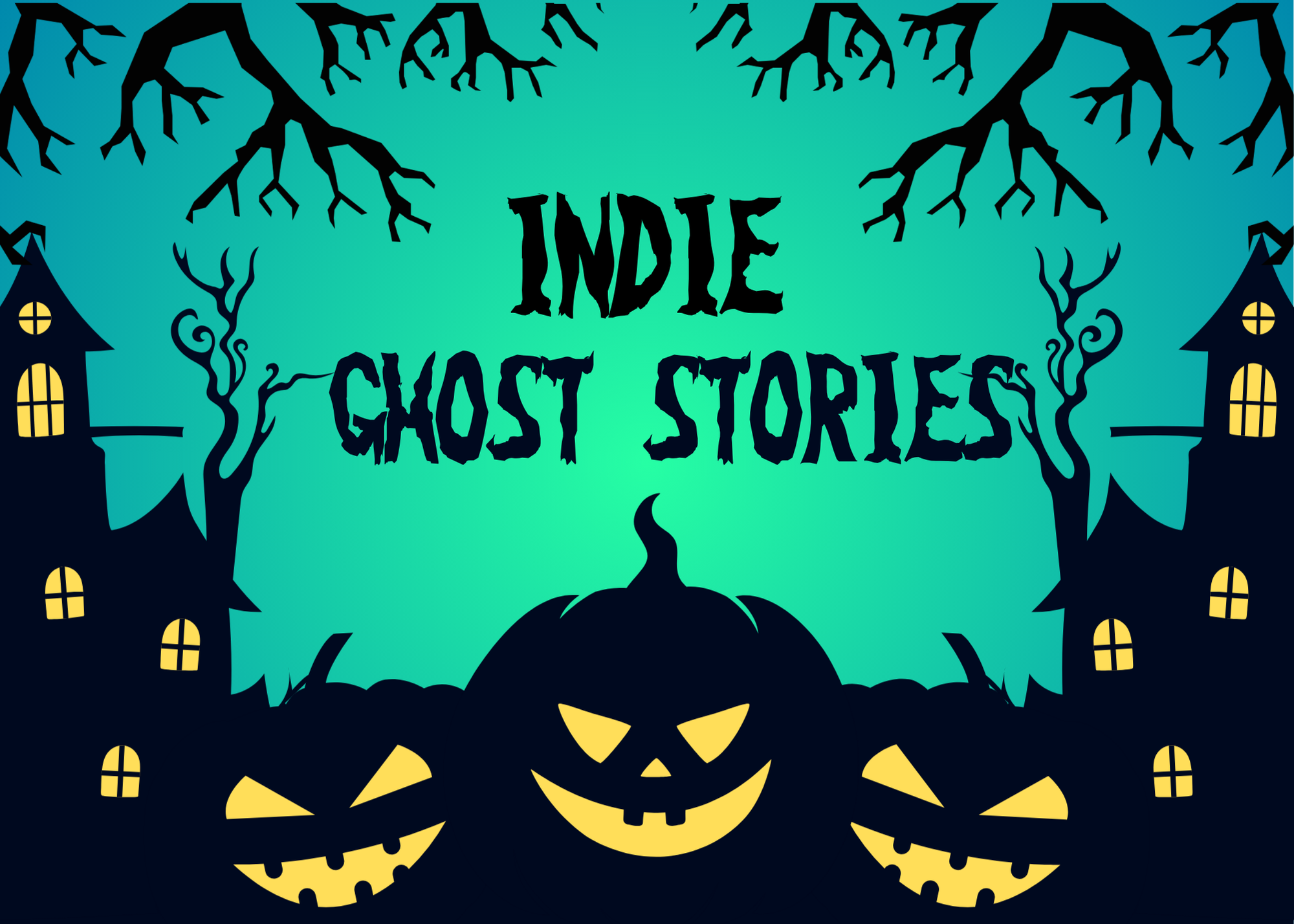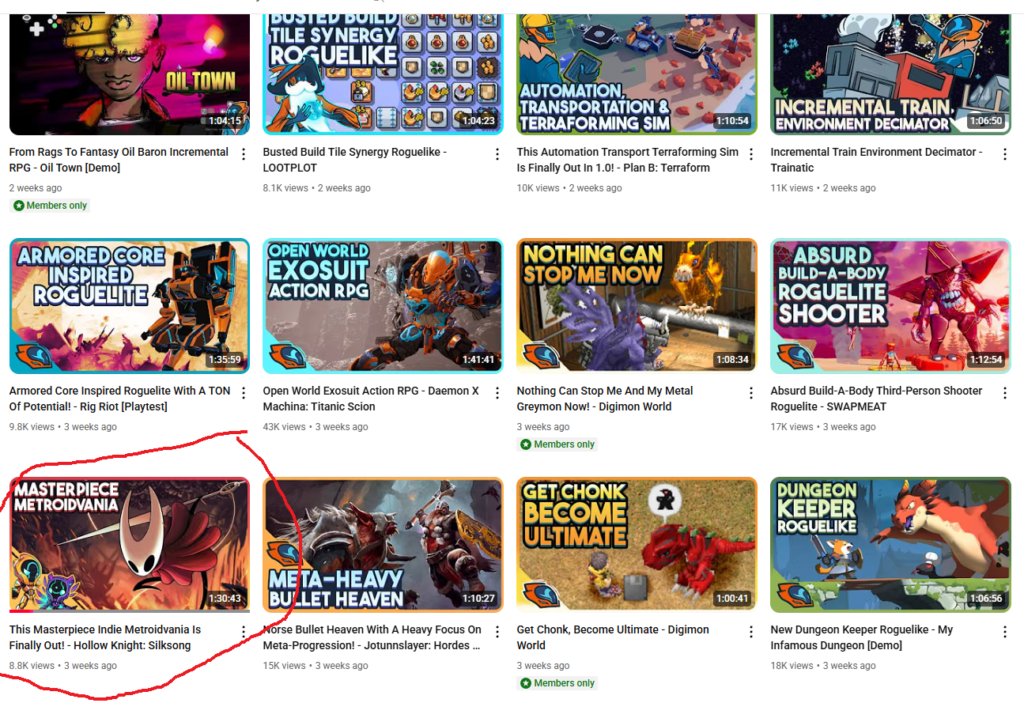
It’s officially spooky season – I pulled our family’s Halloween decorations out of the garage this past weekend. Our collective need for Halloween and horror is to expose ourselves to our fears (irrational or not) so that we can transcend them and take on the real horrors of the world. There are no skeletons or witches or zombies out there in our day to day but it is good to look at them so we can move on.
I find indie game development similar. There are a lot of ghost stories and fears that indies have that aren’t actually real. We need to expose them, look at them, so we can move on and confront the real horrors of game development.
In this blog post I want to look at the ghost stories that indies tell each other and pick apart why we shouldn’t fear them.
Then, later this week I am going to post a list of things they SHOULD be scared of but aren’t.
So here goes:
Ghost story #1: Another game developer had my game idea! I am dead, It’s over!!!!
Why this ghost story isn’t true.
- Ideas and hooks are overrated. It is execution that truly matters. A good hook might help you go viral on TikTok, but if the game isn’t fun or doesn’t have gameplay depth, Steam shoppers won’t buy it. The reason your game will succeed or fail is how fun it is to play at the 3+ hour mark.
- Every person is so unique there is no way they will make the same game. Look at game jams. Everyone starts with the same prompt and the variety of games and genres that come out of it are huge. So even if you share the same hook or setting as another game, there is no way your art will be the same as theirs. There will be differences and the fans won’t mind.
- Similar games are good in the minds of consumers; they like it (see Two Cakes meme here). You can actually bundle with that similar game assuming you are the same general scale and quality of experience.
Here are 3 blog posts that I have written (with real world examples) that show we are not competing with each other:
- Other indie developers are not your competition
- Bundling is giving – why everyone should be bundling with another developer at launch.
- I come in peace: Why indies are not competing against each other
Specifically here is Dylan worried about the “same game” problem and then he went on to have a mega hit game:

Ghost story #2: Wishlists get old. Everything decays and it will continue that way until the heat death of the universe
The reality: This ghost story targets our fears that everything we do is somehow meaningless and we must endlessly toil. It is the Sisyphus myth. The fear is that all the work that you did to gather those thousands of wishlists were in vain because they turned to dust by the time you get to the top of the hill and launched your game.
But I see no widespread evidence that wishlists get old. Here are some cohort conversion charts
Zero sievert wishlist conversion chart:

Cosmoteer wishlist conversion chart

Look at those basically flat those red bars are. There is no upward trend showing that more recent wishlists are better than older wishlists.
BUT! both of those examples are from hit games. What about games that didn’t perform well?
The following chart is for the game Song of Iron, which built up 100K wishlists by launch but unfortunately underperformed. I wrote up my conversation with the developer here.

If you look at that conversion rate chart, it is surprisingly steady from month to month.
So why did Song of Iron underperform if the wishlists didn’t get old?
Compare the conversion rate percentage for all 3 of these games. Notice that the best selling games like Zero Sievert and Cosmoteer all convert around 15% and sometimes even peak above 20%?
But in this chart for Song of Iron, the game typically converts around 7% and a few times peaks just above 10% conversion.
The reason games underperform is not because the wishlists get old. They do poorly because ALL of their wishlists across time converted at an equally lower rate.
Blog:
- Do wishlists get old?
- How Cosmoteer’s 4.5 year marketing campaign shows that wishlsits don’t get stale.
- How a pixel art shooter achieved a million dollar launch: The Zero Sievert Story
Ghost story #3: I don’t have a following, so my game will never succeed
The ghost story: My game is dead even before I started because I can’t get traction on social media because I don’t have a following.
The reality:
- Social media rarely works for any game regardless of their following.
- A following comes from releasing an amazing game. So ironically, if you want a big social media following, release a hit game.
- You pay valve 30% because Steam is responsible for showing your game off to its giant audience. Steam will test your game with a small audience and if it does well, they will show you further and further and further, regardless of how many Youtube subscribers you have.
- The thing that gets you visibility is releasing a demo and reaching out to content creators or entering festivals, not social media (in most cases)
- Most developers who have a hit game, have very small social media followings and report that social media played a very tiny role in their success.
- Even Jonas Tyroller said despite his thousands of Youtube subscribers, they are not a significant source of traffic to buying and wishlisting his game.
More reading:
Ghost story #4: I shouldn’t market my game because someone will steal my game idea
The ghost story: “There was this one guy on reddit who posted about his game and a shady company cloned it and now those scammers are making millions on mobile and the dev has nothing and now is destitute.”
The reality: There actually ARE incidents where a company stole a game idea, but nobody is going to steal your idea unless you are already making big money off of it. For instance, Jonas Tyroller’s hit game Thronefall was basically cloned on mobile. Here is a link to someone sharing that Thronefall was cloned.
Stray Fawn’s Dungeon Clawler was cloned even before it was released. Read this article here.
Those predatory, thieving developers only steal the idea once it becomes popular. Thronefall was a big proven hit before it was stolen. For Stray Fawn, their game was stolen before release, but they are an established studio and the viral success of the concept of Dungeon Clawler made it clear that this game was interesting.
While psychologically hard, the theft doesn’t seem to hurt your sales on Steam. So, when you have a hit game on Steam, and your game is clone for mobile, here is you dealing with that psychological horror:

Think about it this way: the earnings you make from your hit game means you can hire some good lawyers. Stray Fawn was able to get the app store to delist the games that had outright asset theft. However they have had some trouble getting the ones that copy mechanics.
Also, if someone does clone your game, the press LOVES to write articles about how some big mean old company stole an original game idea from a sweet innocent indie game developer with a heart of gold. You can also post your story on Reddit because redditors eat that stuff up like crazy. It is free publicity.
So yes, it is psychologically difficult to see someone copy your idea, but if the game has the magic to sell well, you will be ok. It is actually a sign that you are on the right track and are making a successful game. You should not hold back on marketing because you are afraid someone will steal your idea.
Ghost story #5: I shouldn’t reach out to a content creator until close to the launch because I will have blown my one shot
The ghost story: If I reach out to a content creator too early and they play my game they will be satisfied and then won’t play it again when I really need their support during the launch of my game. Also, that boost in attention they give me early in development will quickly fade because …. WISHLISTS! GET! OLD!
The reality: If your game has THE MAGIC, content creators will want to play your game over and over and over. I have seen many examples of content creators playing a favorite game multiple times across many months.
This fear is a classic example of loss aversion where people are more afraid they will lose the “momentum” but don’t factor the huge upside of a content creator who loves your game so much they will play it over and over. Look at how many times Northernlion played indie game Tape to Tape

If you delay content creator outreach until the end of your marketing, you risk missing out on a huge visibility upside. If content creators don’t want to play it over and over, that is a game design problem that you need to address; not a marketing problem.
Additional reading:
I outlined 10 reasons why you shouldn’t delay content creator outreach in this blog post.
Ghost story #5a: side question… but I am making a short linear narrative game!
The ghost story: But but but my short linear narrative game that is only 30 minutes long doesn’t have enough content and when a content creator plays it they will all be satisfied and then my wishlists will get old and never play it again.
You should still reach out to content creators with your short linear demo.
The bigger problem is that the game is short and linear. Steam players just don’t like that. You have bigger problems than content creators. If you can, make your linear game longer. Steam likes loooooong games.
But there are linear games, you should reach out. People who like linear narrative games often look at content creators as a curator, but don’t actually watch the stream. They just see the thumbnail, maybe watch the first 10 seconds of the stream and say “OOOOH That game looks amazing, I don’t want this content creator to spoil it, I want to experience this game for myself” and then will close the stream and download your demo.
Remember, at the end of the day, people WANT to play games. If they want to play your game, they aren’t going to spoil it by watching the content creator.
The biggest problem is if your game is not interesting and people don’t want to play your game. It has nothing to do whether you over expose, or content creators play all of it.
Ghost story #6: Your game announcement had low wishlists, your game is DOOOOOOMED FOREVER.
The ghost story: If you launch a Steam coming soon page and the wishlists are low in the first two weeks, Valve puts a “black mark” of DOOM on your game and it will forever be hidden from the algorithm. Therefore you should hold off announcing your game until it is absolutely ready.
The reality: Nope! Don’t freak out. There is no “black mark” that the Steam algorithm bestowed a game. You don’t need to delete your game from Steam and reupload it with a new game name to try and outwith the black mark. It doesn’t exist.
Instead, think of the low wishlists at announcement as one missed opportunity but not a deal killer. In baseball terms it was a swing and a miss but you still have many more pitches where you can hit a home run. In soccer terms (or European football) it was a shot on goal that missed, but the match is long and you have many more tries.
There is no “black mark.” Just get back out there and maybe you can get some attention when you run a beta, or launch your demo, or get into festivals or have content creators play it. There are many opportunities to come back. You are not dead forever.
My advice to avoid low wishlists at announce. You should hold off on announce until you have a trailer, 3 unique environments for your game, and a quality capsule (see more here) but don’t wait so long that you miss out on the passive visibility provided by Steam.
Articles to read:
- When should I launch my coming soon page
- Why am I not getting wishlists?
- How many wishlists will I earn in my first 2 weeks
Ghost story #7: That AAA game everyone is talking about is launching when my game launches. I will be buried.
The ghost story: something something about the press not covering you, or everyone in the world will be playing that AAA game and nobody will be playing your game.
The reality:
At its peak *ONLY* 587,150 people were playing Silksong.

That sounds like a huge number but on that same day, there were 11,933,860 people playing other random games on Steam overall.

That means only 4.9% of people on Steam were playing Silksong. That is impressive for an indie game made by a small team, but I am sure you could find enough people to buy your game in the remaining 11,346,710 people on Steam that day who were not playing Silksong.
But what about content creators?!? They are all playing Silksong!
Wanderbots loves Metroidvanias and did a whole series on the first Hollow Knight. But look at his youtube channel during Silksong launch. He only played Silksong one time and it is his second-lowest performing video this month so he moved on and played a bunch of other indie games.

Articles to read
- The other game that succeeded during the Starfield Launch.
- How much should we freak out about Silksong
Summary: The end of the story
So basically, my message is don’t be scared.
I know indie game dev is hard and it is scary, and you are taking big risks.
But be brave. You should not be afraid to share your game. You cannot possibly over-expose your game.
In my next post I will list the things you should actually be scared of. So please enjoy your next few days of fear-free-bliss.